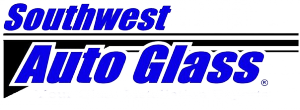
In today’s era of automotive innovation, power windows have become a standard feature in vehicles, offering convenience and ease of use to drivers and passengers. The transition from manual window cranks to the effortless press of a button has transformed the driving experience. However, like any mechanical system, power windows can encounter malfunctions that necessitate attention and repair. This blog delves into the intricate mechanics of power windows, their operation, and the prevalent malfunctions that often require power window repair.
Understanding Power Windows
Power windows are a result of advanced automotive engineering and are designed to enable electronic control of a vehicle’s windows. These windows can be effortlessly raised or lowered with the push of a button, eliminating the need for manual cranking. Electric switches, typically found on the center console or door panels of the vehicle, control the system. When the switch is activated, it sends electrical signals to the window motor, dictating the desired direction of the window’s movement.
Key Components of Power Windows
- – Window Switches: These switches act as the interface between the driver and the power window system. They are strategically placed for easy access and allow the user to command the window to move up or down.
- – Window Motor: The heart of the power window system, the motor generates the necessary mechanical force to move the window glass. The motor’s rotational motion is converted into linear motion through a gear mechanism, which drives the window’s movement.
- – Regulator Assembly: The regulator ensures the smooth and controlled movement of the window glass. It consists of a set of mechanical components that guide the window’s trajectory, preventing misalignment or jamming.
- – Window Tracks and Guides: These components provide the pathways along which the window glass travels as it is raised or lowered. Properly aligned tracks and guides are crucial for maintaining smooth operation.
How does Power Windows work?
The sequence of events that occurs when you operate a power window involves a combination of electrical and mechanical actions:
- Activation: When the window switch is pressed in either direction, it completes an electrical circuit that sends a signal to the window motor.
- Motor Engagement: The window motor receives the signal and begins to rotate. The motor’s rotation is transferred to a set of gears that convert it into linear motion.
- Regulator Action: The motor’s rotation transmits linear motion to the regulator assembly. This assembly guides the movement of the window glass along its predefined path.
- Window Movement: As the regulator moves the glass, it travels along the tracks and guides. The glass either ascends or descends, depending on the direction of the switch’s activation.
Common Power Window Malfunctions
While power windows offer unparalleled convenience, they are not immune to malfunctions that can disrupt their operation.
- Window Sticking or Off-Track: Windows can become stuck midway or fall off their tracks due to worn-out components, debris accumulation, or damage to the regulator mechanism.
- Slow or Unresponsive Movement: If a power window moves sluggishly or fails to respond to switch commands, it may indicate issues with the window motor, regulator, or even electrical problems.
- Abnormal Noises: Grinding, clicking, or screeching sounds during window operation may point to issues with the regulator, motor, or tracks that require inspection and repair.
- Auto-Reversal Failure: Modern power windows are equipped with safety features that reverse the window’s direction if it encounters an obstruction while closing. Malfunctions in this safety feature can compromise occupant safety.
- Electrical Glitches: Faulty wiring, blown fuses, or defective window switches can disrupt the normal functioning of power windows, requiring electrical diagnostics and repair.
- Window Misalignment: Improperly aligned windows might cause leakage, air drafts, and compromised security. Misalignment can stem from damaged tracks, guides, or regulator components.
Power windows represent a marvel of automotive engineering, streamlining the process of window control and enhancing driving comfort. Gaining insight into the intricate mechanics underlying power windows provides a deeper appreciation for their significance in modern vehicles. However, there are a number of malfunctions that can limit the convenience they provide. Timely power window repair is essential to ensure smooth operation, maintain safety features, and preserve the overall driving experience. Regardless of the vehicle type, whether it’s a sedan, SUV, or motorhome, power windows are a fundamental aspect of contemporary automobile design that contributes to the comfort and convenience of drivers and passengers alike.
